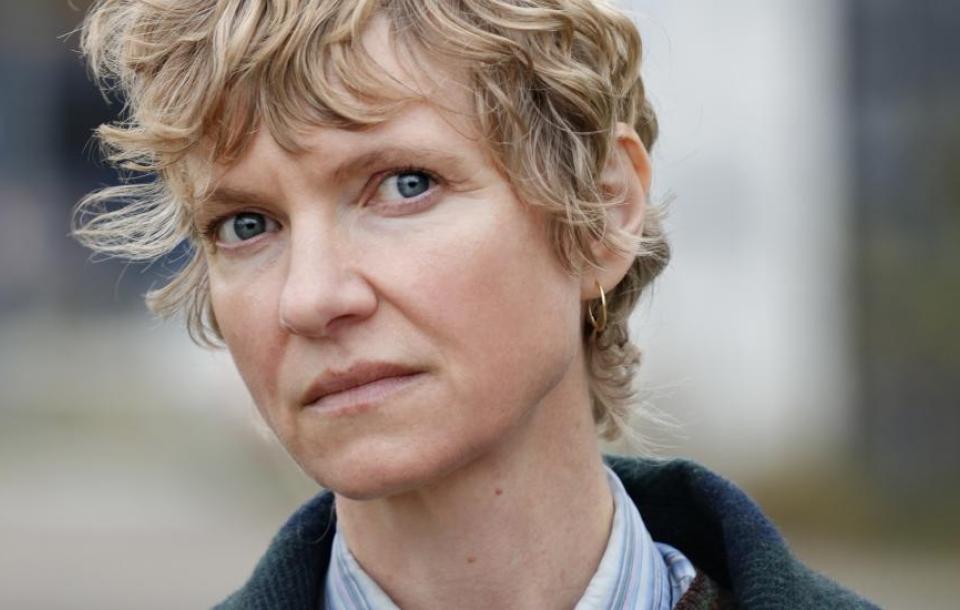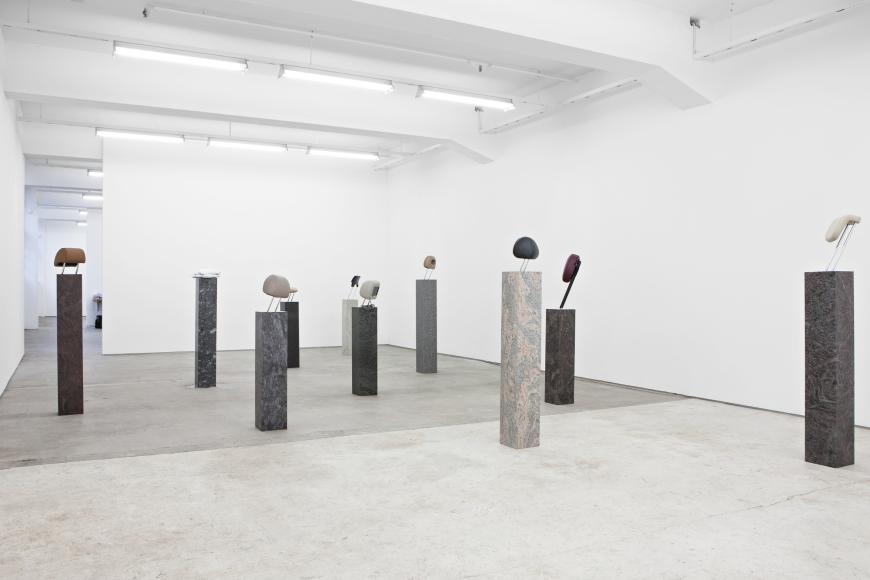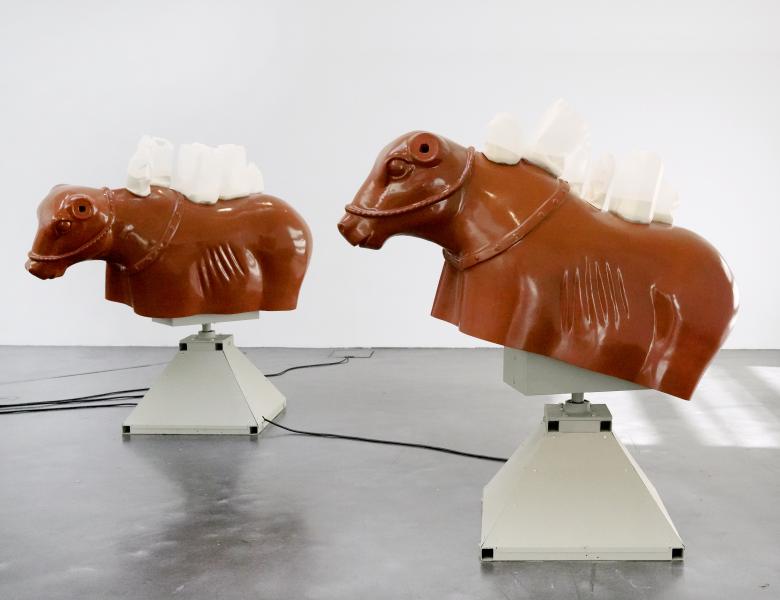Beier has an international career that has recently seen her present major retrospectives in France, Finland and Mexico. Following several projects in Belgium over the years – from Objectif Exhibitions in Antwerp to Kunsthal Ghent or the Beaufort Triennale – this is her first institutional exhibition in Brussels.
The selection of works for this mid-scale exhibition that occupies Bozar’s Antichambres spans the period from 2013 to 2025 and presents a mix of materials and commodities. The artist selects objects that have accrued meaning through their production, use and circulation. While the dialogues between the objects on display are sometimes complex – even contradictory – the compositions seem motivated by relatively simple formal relationships. They offer a variety of dynamics: some stand vertical as totems, others lie on the floor like tombstones, while another is suspended from the ceiling; one piece is embedded in the wall, and another seems to emerge from the wall. And at their heart, or intersection, two sculptures rotate restlessly in the central rotunda.
Beier’s installations often employ strategies of juxtaposition, that challenge or subvert the volatile ideas carried by her chosen objects. Her works oscillate between their material presence and the image they project, defying a singular perspective or interpretation. For example, the two rotating sculptures titled Beast (2018-2024) are bucking bulls used for rodeo rides, on whose backs Beier balances mass-produced plastic bottles of powdered baby milk. These mute beasts of burden rotate for our pleasure, in a jerky motion designed to unseat a rider.
Great Depression (2023) is made from a similar industrial fabrication process and material as Beast but is covered in a pastel coating. Subtly suggestive of female genitalia, it is in fact a designer bathtub, embedded vertically into the wall, its plughole stuffed with banknotes, an enigmatic form hovering somewhere between pornographic act and bathroom showroom.
On one gallery floor, Beier has placed the recent work Sculpture (2025), a series of gravestones in the form of carved, stone books. Left blank, without an inscription of someone’s name or biographical details, these readymade sculptures become universal. Their heaviness is contrasted with the flexible cardboard tubes from toilet rolls and kitchen rolls on which they rest. These small vehicle-like figures present a meeting between the time-defying marble – also very present in the gallery’s architecture – and the readily available, usually ephemeral cardboard tubes, which are often used by children to create their first sculptures.
In the curved gallery that skirts one side of the rotunda, Beier presents her series Real Estate (2013), the headrests from various car-, office- and massage-chairs mounted like classic sculptural busts on marble plinths. The different head-supports are presented at varying heights, almost creating the impression of an array of characters, while allowing us to dwell on the ergonomic forms designed to accommodate weary heads.
Fleet (2024), a group of models of cruise ships normally used by the industry to sell tickets, is suspended from the ceiling. Their installation recalls votive model ships often found in churches in Scandinavia, placed there by grateful sailors who have escaped shipwreck thanks to divine intervention. Their flotilla formation is taken by the artist from an advertisement trope used by most cruise lines, conflating luxury escapism with an aggressive military image. The maquettes are loaded with a mixture of sand and sugar, two materials that share formal properties and play a key role in the history of international extractivist economy.
Finally, an entirely new work, Relief (2025), features a sliver of a wooden bed and a wooden chair, mounted on the wall. While the two shapes formally echo one another, this small–large pairing projects a scene that could evoke anything from a parent-child bedtime routine, to a bedside vigil. In this way, the work is as slippery as its title, which describes its form as a raised image but also a mixed emotion.
Beier’s work refuses to allow itself to be pinned down by a single reading. “I feel that meaning seeps out of my objects,” she claimed in a recent interview for Bozar, adding “Ultimately, I think, meaning is less an intentional statement and more what is wordlessly passed long.”
Curated by Zoë Gray
This exhibition is presented in the framework of the Danish Presidency of the Council of the European Union.

Artist's biographie
Nina Beier (born 1975 in Aarhus, lives and works in Copenhagen).
Recently Nina Beier’s work has been the subject of survey exhibitions at Capc in Bordeaux, France (2024); Kiasma in Helsinki, Finland (2024); Tamayo Museum in Mexico (2024); and recent large-scale installations have been installed at Louisiana Museum of Modern Art in Humlebæk, Denmark (2025), Mudam in Luxembourg (2024); Lafayette Anticipations in Paris, France (2024) Art Sonje Center in Seoul, South-Korea (2023); Haus am Waldsee in Berlin (2023); the Lyon Biennale in France (2022); the Busan Biennale in Korea (2022); the High Line in New York (2022); the Hammer Museum in Los Angeles (2022); Pinacoteca Agnelli in Turin (2022); the São Paulo Biennial in Brazil (2021).
Beier also has a permanent sculpture, titled Men, in Nieuwpoort, installed on the shore since 2018 in the framework of the Beaufort Triennial.

